Out Now
The AI Issue
Current Issue
The AI Issue
OCT - NOV 2025

A Stephen King thriller, or Maximum Demand reduction policy? The possibly even more frightening (and costly) reasons LED lights flicker… By Matthew Duncan, Master Electricians Australia
Nothing could be scarier than sitting in a room when the lights start flickering. I mean, why else would every horror movie use this technique to drive fear into the hearts of men, women and children the world over?
Outside the world of fantasy, though, it’s mostly just an annoyance, and sometimes a costly one.
Why do LED lights, the greatest revolution in energy-saving illuminances since the fluorescent lamp, and current product of choice for the majority of domestic installations, seem to have such a fundamental issue?
Let’s analyse some causes and possible solutions for this issue.
#1 Incompatible dimmers
When buying light dimmers, LED compatibility is a crucial factor for consideration. Traditional light dimmers can cause intermittent lamp operation and decreased lamp life. For those that do light up, it will not be long before you see your dimmable lamp flicker. Some manufacturers specify a specific matched dimmer to use to ensure compatibility, so it is key to check for this.
#2 Installing Non-Dimmable LED Lamps in LED Dimmers
Non-dimmable LED lamps on dimmers are likely to flicker, and even hum. They may still dim like the actual dimmable lamps, but usually have an uneven effect – if they work at all. Moreover, the use of non-dimmable LED lights in dimmers can affect their service life. The more often they flicker, the shorter their lifespan will become.
#3 Inrush current from other appliances
Do your LED lamps flicker whenever you turn on high consumption appliances, such as electric stoves, ovens, air conditioners, heaters, or washers? In such cases, these ‘ghostly’ experiences with your LED lights have to do with inrush current. This is the initial energy drawn by appliances when you first switch them on. Because they suck a lot of power, they can cause a voltage reduction. Keep in mind that LED lights are already up to 75 per cent more energy-efficient than old halogen lights. Since they use much less energy, further reducing the voltage or current flow to lamps can make them turn off and on, presenting as a flicker. Fan (and other) speed controllers can be a source of this as well when changing speeds.
#4 Off-peak ripple control signal – a major source of issues
What is the signal and why is it used?
Electricity suppliers in certain areas of Australia are injecting an off-peak ripple control signal onto their distribution networks at specific times. It is done to remotely control devices like off-peak hot water heaters, space heaters, pool equipment and public lighting. This high frequency signal is often described as ripple control signal since electricity suppliers are using it to manage peak electricity demand. It is mainly used in NSW and parts of Queensland. It is less common in other states.
How does it affect electrical appliances?
Ripple control adds a high frequency signal on top of the standard power supply. The ripple is commonly at 492Hz, 750Hz or 1050Hz. Some electrical appliances can be sensitive to this high frequency signal. It is mainly devices like fans, toasters and non-dimmed or dimmed lights that are affected by the ripple control signal.
Examples of symptoms could be buzzing noises from fans or flickering lights at set times during the day. Different ripple control signals may be used in the same area for the various remotely controlled devices and could be operated at any time during the day or night. They may have an individual repeating interval, typically every 30 or 60 minutes, but other intervals may also occur. However, even if there is a ripple control signal present in your power grid, it does not necessarily mean that you will see its symptoms, because not all properties will be affected in the same way.
There can be a strong amplification of the signal in certain areas of the grid, caused by various factors related to the impedance of the supply grid itself. Energy-efficient lighting, such as LEDs, can be very susceptible to any variations in the power supply. Therefore, these lights will be much more affected by a ripple signal than other lighting loads would. Experience shows that certain LEDs can cope better with high frequency signals depending on the quality of the design.
There are several products on the market that are designed to filter out ripple signals from the power supply and, depending on the strength of the signal, can work very effectively. They just need to match the exact frequency being injected. Ripple frequency information can usually be obtained from the supply authority servicing your area.
When the supply cables to the LED lights are run near cabling for other circuits, flickering can be caused through induced voltage. Increasing the separation distances between the cabling is the simplest solution to this problem.
In many instances, the installation of a capacitor or other load control/corrective device across the switch can provide a solution. Products like the Clipsal 31CAP is an example.
LED lights can also be highly susceptible to interference from other sources. Interference can come from a variety of internal external sources to the property, for example, power supplies for computers or electronic appliances, solar inverters, VSDs, or industrial machinery. Interference sources can be very hard to pinpoint, especially without specialised power quality monitoring equipment, just like the ripple controllers’ frequencies mentioned above.
Network voltage fluctuations can also be a cause. This has become more prevalent with the greater saturation of grid-connected solar power generation. It causes network voltages to increase and rapidly change as cloud cover passes over, and substation automatic tap changing transformers try to keep up with a constantly changing demand.
In some instances, the causes cannot be easily identified and solved. Changing to a different brand that has different built-in filters may fix the issue. Installing one or more filters or devices mentioned above may also solve the problem. In other circumstances the problem may never fully go away, and a different lighting product (other than LED) may need to be considered.
In the future we hope that these types of issues can be designed out of the lights, but only following manufacturers installation instructions and using good fault finding skills is going to ease the problem.
Master Electricians have unlimited, direct access to the MEA Technical hotline. If you need technical support, phone 1300 889 198.
Keep up to date with our latest news and competitions by subscribing to our regular newsletter.

Issue 188
AUG - SEPT 2025

Issue 187
JUN - JUL 2025

Issue 186
APR - MAY 2025

Issue 185
FEB - MAR 2025

Issue 184
DEC 2024 - JAN 2025

Issue 183
OCT - NOV 2024

Issue 182
AUG - SEPT 2024

Issue 181
JUN - JUL 2024

Issue 180
APR - MAY 2024

Issue 179
FEB - MARCH 2024

Issue 178
DEC 2023 - JAN 2024

Issue 177
OCT - NOV 2023
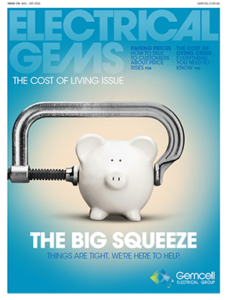
Issue 176
AUG - SEPT 2023

Issue 175
JUN - JUL 2023

Issue 174
APR - MAY 2023
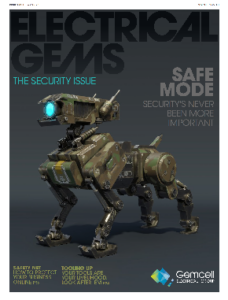
Issue 173
FEB - MAR 2023

Issue 172
DEC 2022 - JAN 2023

Issue 171
OCT - NOV 2022

Issue 170
AUG - SEPT 2022

Issue 169
JUN - JUL 2022

Issue 168
APR - MAY 2022

Issue 167
FEB - MAR 2022

Issue 166
DEC 2021 - JAN 2022

Issue 165
OCT - NOV 2021

Issue 164
AUG - SEPT 2021

Issue 163
JUN - JUL 2021

Issue 162
APR - MAY 2021
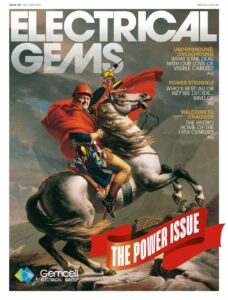
Issue 161
FEB - MAR 2021

Issue 160
DEC 2020 - JAN 2021
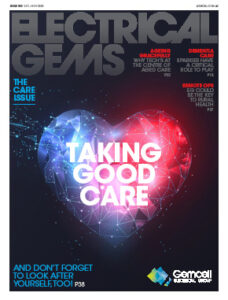
Issue 159
OCT - NOV 2020

Issue 158
AUG - SEPT 2020

Issue 157
JUN - JUL 2022

Issue 156
APR - MAY 2020

Issue 155
FEB - MAR 2020

Issue 154
DEC 2019 - JAN 2020

Issue 153
OCT - NOV 2019

Issue 152
AUG - SEPT 2019

Issue 151
JUN - JUL 2019

Issue 150
APR - MAY 2019

Issue 149
FEB - MAR 2019

Issue 148
DEC 2018 - JAN 2019
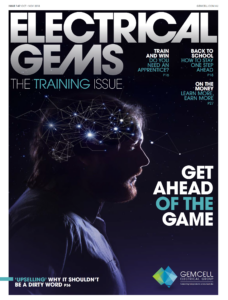
Issue 147
OCT - NOV 2018

Issue 146
AUG - SEPT 2018

Issue 145
JUN - JUL 2018

Issue 144
APR - MAY 2018

Issue 143
FEB - MAR 2018

Issue 142
DEC 2016 - JAN 2017
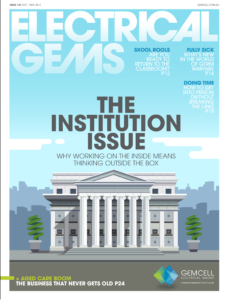
Issue 141
OCT- NOV 2017

Issue 140
AUG - SEPT 2017

Issue 139
JUN - JUL 2017

Issue 138
APR - MAY 2017

Issue 137
FEB - MAR 2017
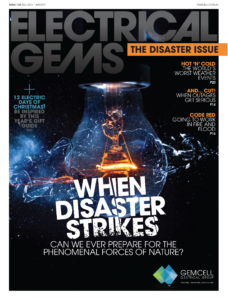
Issue 136
DEC 2016 - JAN 2017
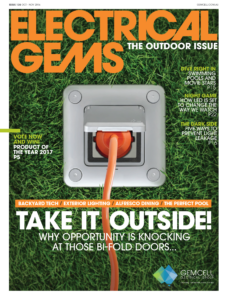
Issue 135
OCT - NOV 2017

Issue 134
AUG - SEPT 2016

Issue 133
JUN - JUL 2016

Issue 132
APR - MAY 2016

Issue 131
FEB - MAR 2016

Issue 130
DEC 2015 - JAN 2016

Issue 129
OCT - NOV 2015

Issue 128
AUG - SEPT 2015
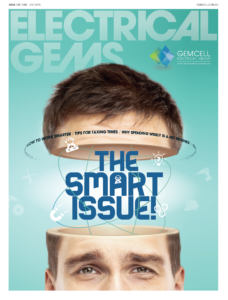
Issue 127
JUN - JUL 2015

Issue 125
APR - MAY 2015

Issue 125
FEB - MAR 2015

Issue 124
DEC 2014 - JAN 2015

Issue 123
OCT - NOV 2014

Issue 122
AUG - SEPT 2014

Issue 121
JUN - JUL 2014

Issue 120
APR - MAY 2014

Issue 119
FEB - MAR 2014

Issue 118
DEC 2013 - JAN 2014
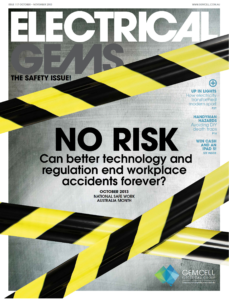
Issue 117
OCT - NOV 2013

Issue 116
AUG - SEPT 2013

Comments (0)
Write a Comment